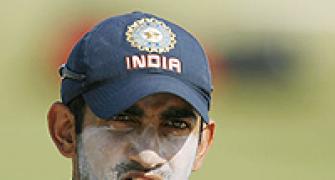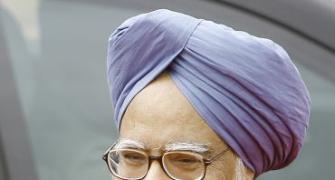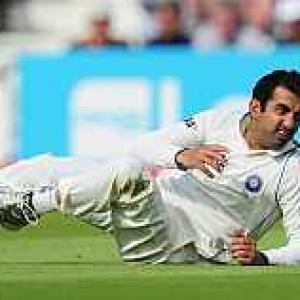 Salman Khan will fly to the United States soon to get a second opinion on his health condition. The actor has been suffering from Trigeminal Neuralgia, which gives him shooting pain in his jaw. When he was being examined for this problem, he was also diagnosed with an aneurysm at the back of his head.
Salman Khan will fly to the United States soon to get a second opinion on his health condition. The actor has been suffering from Trigeminal Neuralgia, which gives him shooting pain in his jaw. When he was being examined for this problem, he was also diagnosed with an aneurysm at the back of his head.
So what exactly ails Bollywood's hottest heartthrob?
Patcy N spoke to Mumbai-based Dr Mohit Bhatt, who is head of neurology at the Kokilaben Dhirubhai Ambani Hospital and Medical Research Institute, to find out what's wrong with Salman Khan. This is what he told us:
What is Trigeminal Neuralgia?
There are 12 cranial nerves -- these are the nerves that supply sensation to different muscles and functions in the face and head region. The fifth nerve is called the Trigeminal nerve; it carries sensation from the face to the brain. It is divided into three divisions -- it gives sensation to your eyes (including the sensation of your eyeball) to your nose and to your jaw.
All nerves basically have electric current. In some people, these nerves get excited electrically by themselves, producing intense pain. It feels like an electric shock. This pain could either be in the first division around the eye, or the second around the nose, or around the jaw. For one person, it is always one division -- it could be the eye, the nose or the jaw, not all three together.
A person suffering from this condition does not feel pain all the time, but it can come like an electric shock when you eat or drink cold water. It could be triggered by a wind blowing towards the face. Even an action like touching a handkerchief to the face can trigger this intense pain.
The pain is like a shock; it can literally throw you for few seconds and then it goes away.  Types of Treatment:
Types of Treatment:
In some people it is caused because one of the arteries is too close to the nerve; with the pulsation of the artery, the nerve gets irritated. When an MRI scan is done, you find the artery is very close to the nerve. When you do surgery to push the artery away, the pain might go away.
But opening the skull to separate the artery and the nerve is a major surgery. We don't recommend it, unless there is a clear big artery sitting besides a nerve. This kind of surgery is reserved for a very small percentage of patients; it is only for very special cases; it is not routine.
In a small percentage of patients, it can even be a growth on the nerve. These are benign growth, not cancerous. They are small tumours. In such cases, we have to cut open and remove the tumour and the pain may go away. However, it is also possible that the pain may not go away.
For some people, we do RFTC (Radio Frequency Thermo Coagulation) ablation of the nerve. This means we put a needle into the nerve which is causing pain and slightly burn it; 30 percent of the nerve is burnt off and 70 percent remains so the function of the nerve remains intact. The extra sensation gets reduced.
RFTC is a small surgery and you are discharged the next day. There is no recovery period; you can function normally the next day.
In a majority of the cases, we give drugs which reduce the pain.
There are lots of drugs available in the market so if you systematically give these drugs for a fair period of time, the condition tends to settle down. For some patients, the pain goes away as soon as they take the drug but as soon as they stop the drug, the pain comes back.
In some patients, the pain may go away for years together and then come back by itself. Sometimes, despite medication, the pain continues.
Dr Mohit Bhatt is Head of Neurology at the Kokilaben Dhirubhai Ambani Hospital and Medical Research Institute. He specialises in Movement Disorders and Deep Brain Stimulation.







